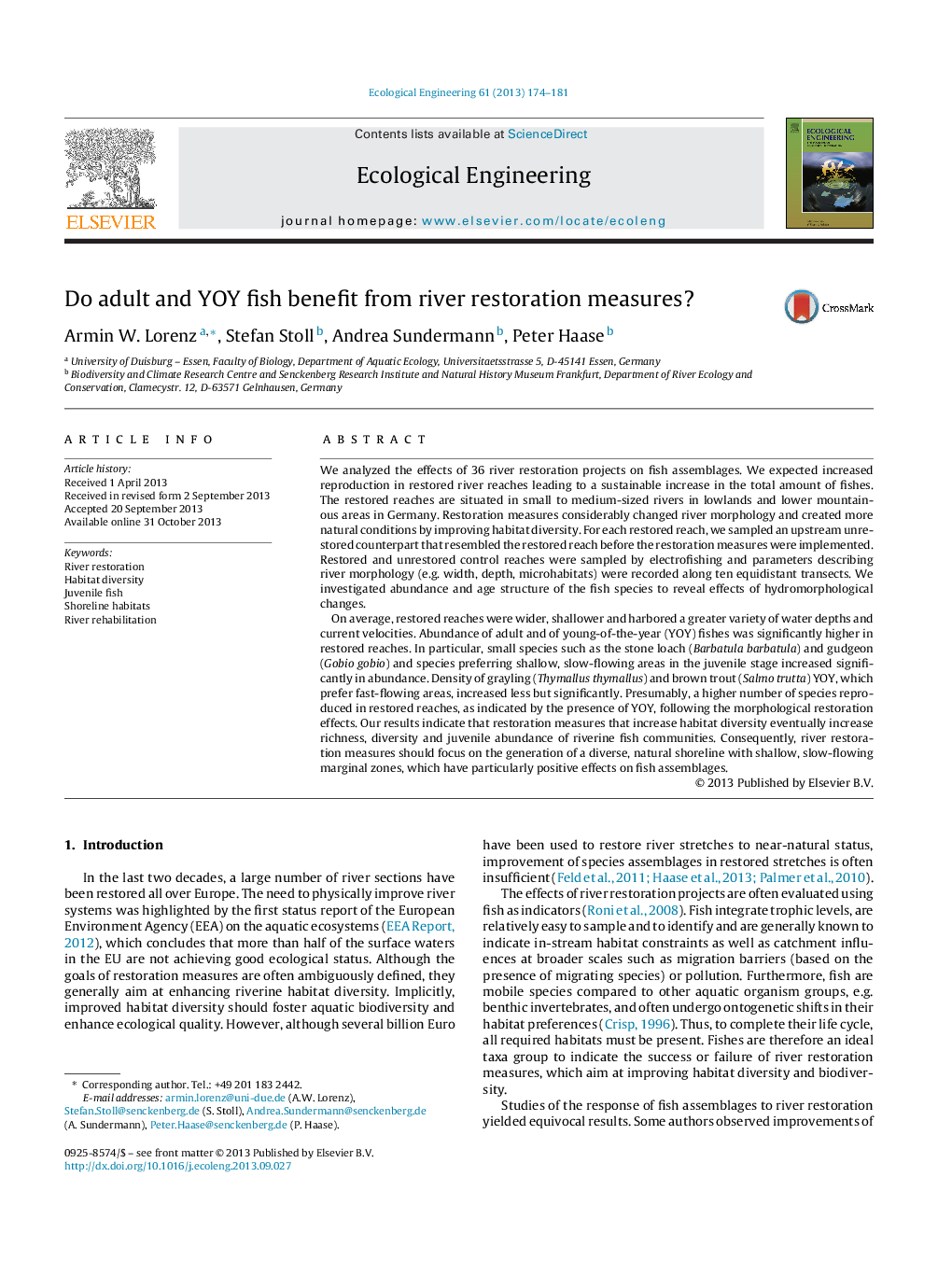| Article ID | Journal | Published Year | Pages | File Type |
|---|---|---|---|---|
| 4389477 | Ecological Engineering | 2013 | 8 Pages |
Abstract
On average, restored reaches were wider, shallower and harbored a greater variety of water depths and current velocities. Abundance of adult and of young-of-the-year (YOY) fishes was significantly higher in restored reaches. In particular, small species such as the stone loach (Barbatula barbatula) and gudgeon (Gobio gobio) and species preferring shallow, slow-flowing areas in the juvenile stage increased significantly in abundance. Density of grayling (Thymallus thymallus) and brown trout (Salmo trutta) YOY, which prefer fast-flowing areas, increased less but significantly. Presumably, a higher number of species reproduced in restored reaches, as indicated by the presence of YOY, following the morphological restoration effects. Our results indicate that restoration measures that increase habitat diversity eventually increase richness, diversity and juvenile abundance of riverine fish communities. Consequently, river restoration measures should focus on the generation of a diverse, natural shoreline with shallow, slow-flowing marginal zones, which have particularly positive effects on fish assemblages.
Related Topics
Life Sciences
Agricultural and Biological Sciences
Ecology, Evolution, Behavior and Systematics
Authors
Armin W. Lorenz, Stefan Stoll, Andrea Sundermann, Peter Haase,
